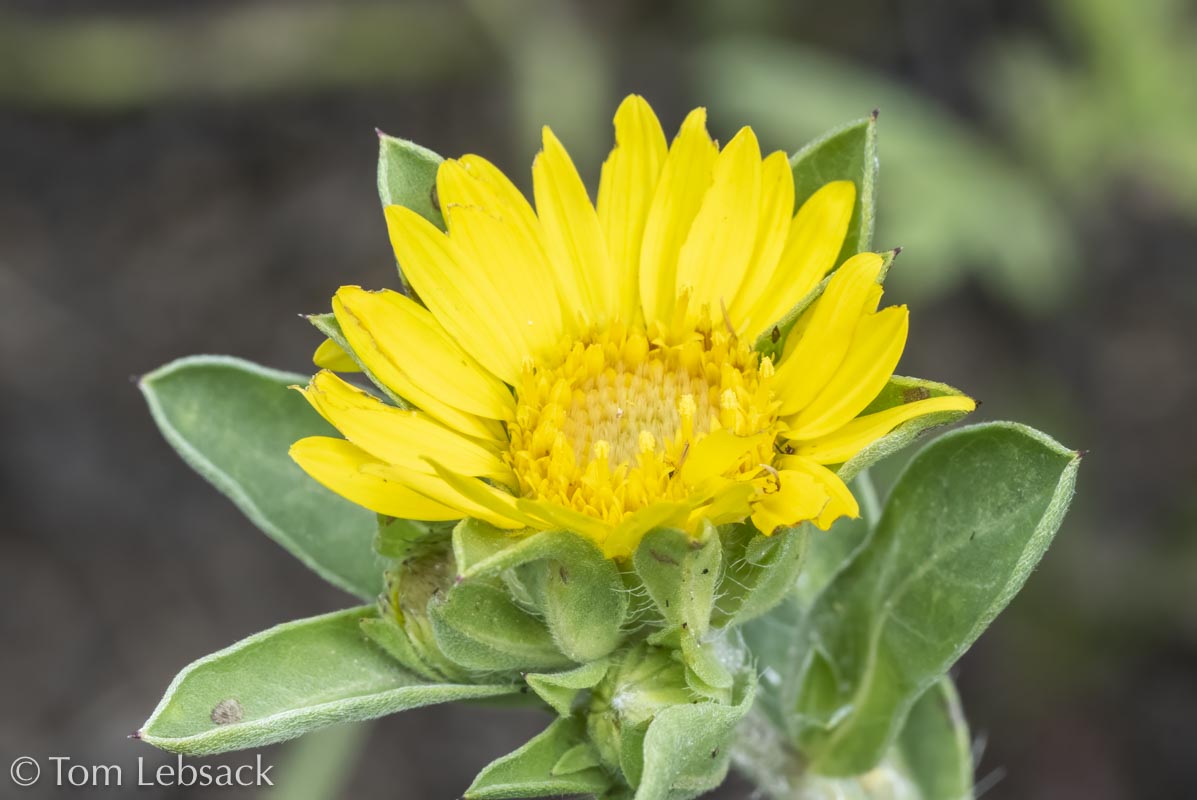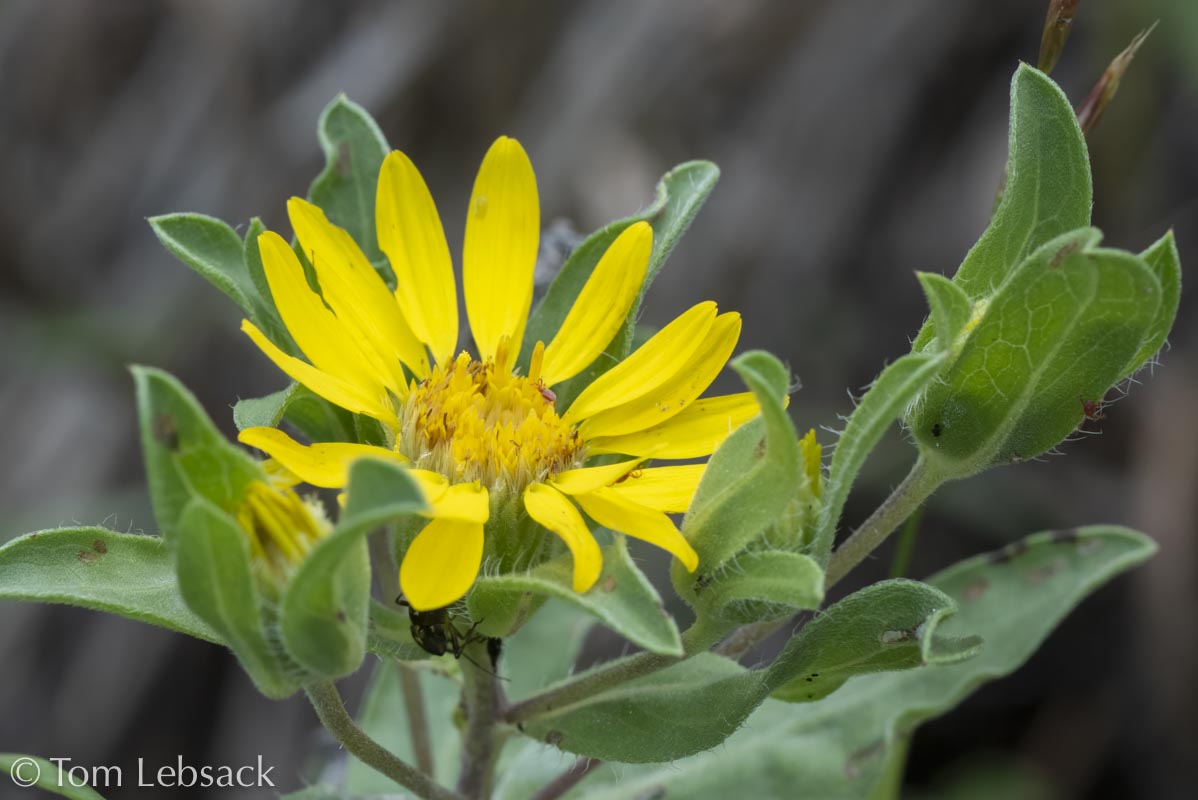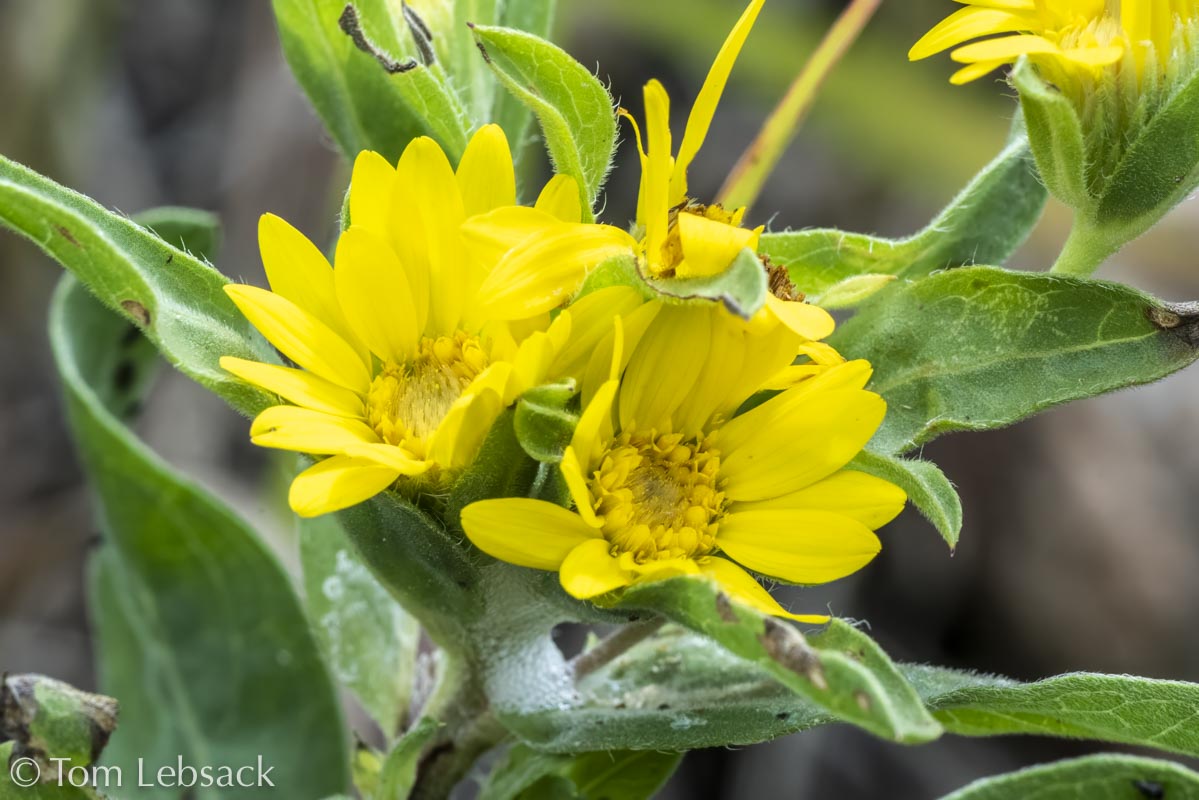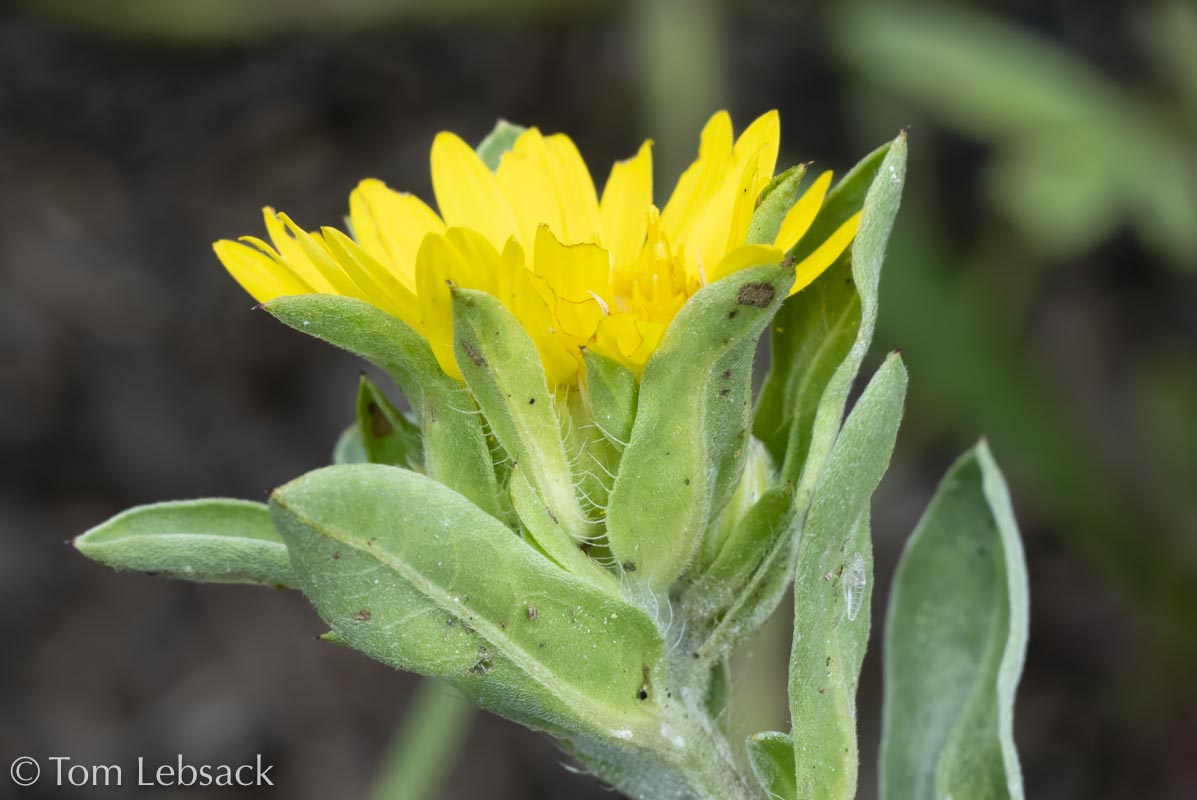Heterotheca villosa var. foliosa
(Foliose False Goldenaster)
| Scientific Name | Heterotheca villosa var. foliosa (Heterotheca foliosa) | USDA PLANTS Symbol | HEVIF |
| Common Name | Foliose False Goldenaster | ITIS Taxonomic Serial No. | 531499 |
| Family | Asteraceae (Sunflower) | SEINet Reference |
Click Here |
| Description |
Life zones and habitat: Plains to montane (4500 to 10500 ft.); various soil types on talus slopes, dunes, dry washes, flood plains, prairies, roadsides and conifer woodlands; most common at the base of the Front Range in Colorado and Wyoming. Plant: Perennial with ascending to erect stems, 8-1/2 to 32 inches tall, moderate to very hairy. Leaves: Lower stem leaves petiolate, becoming sessile upwards; upper leaves with oblong to (seldom) ovate, blades, 5/8 to 2-1/8 inches long, not becoming much smaller upwards; surfaces moderately to densely (and usually glandular)-hairy. Inflorescence: A few to many composite flower heads with 10 to 35 yellow rays and 20 to 50 brownish-yellow disk florets, each 3/4 to 1-1/2 inches across; leafy oblanceolate bracts subtend the heads and nearly obscure the involucre; involucres narrowly bell-shaped with narrow triangular-lanceolate phyllaries that are somewhat hairy, but not glandular, and with margins often reddish purple toward the tips. Bloom Period: July to October. References: "Flora of Colorado" by Jennifer Ackerfield, Yavapia County Plants and Flora of North America. Note: All H. villosa are highly variable species in stem length, leaf hairiness, etc. |
BONAP Distribution Map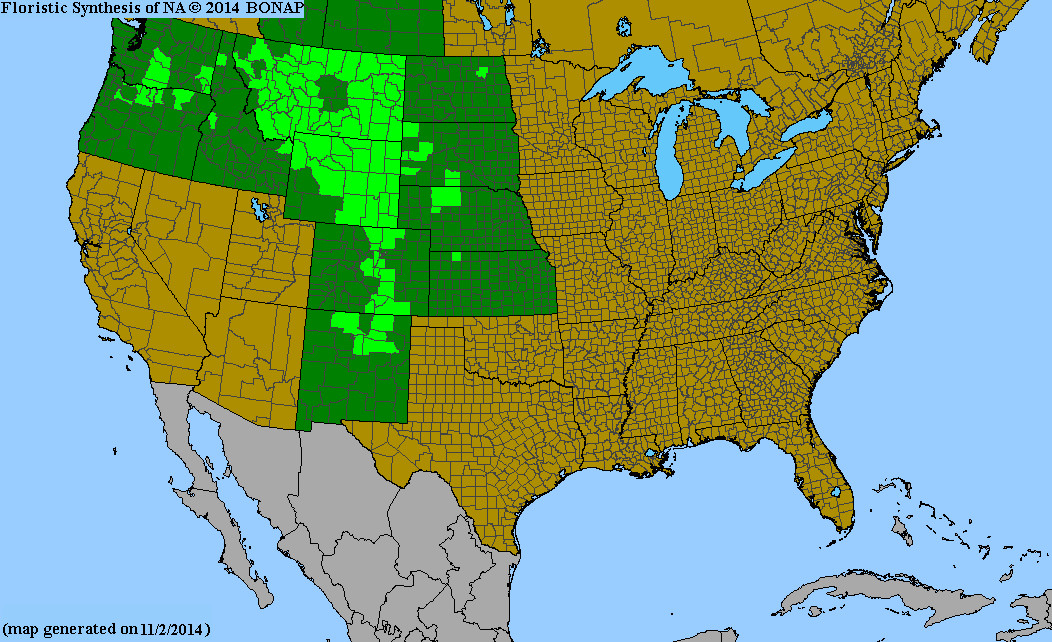 Map Color Key |
Colorado Status: Native |
© Tom Lebsack 2025
Banner photo: Castilleja rhexifolia and a brewing storm over the San Juan Mountains
I try to provide accurate, up-to-date, and relevant information, but cannot guarantee the completeness or accuracy of any information presented on this website. I use authoritative references to insure high standards of accuracy and review and update the information frequently.
